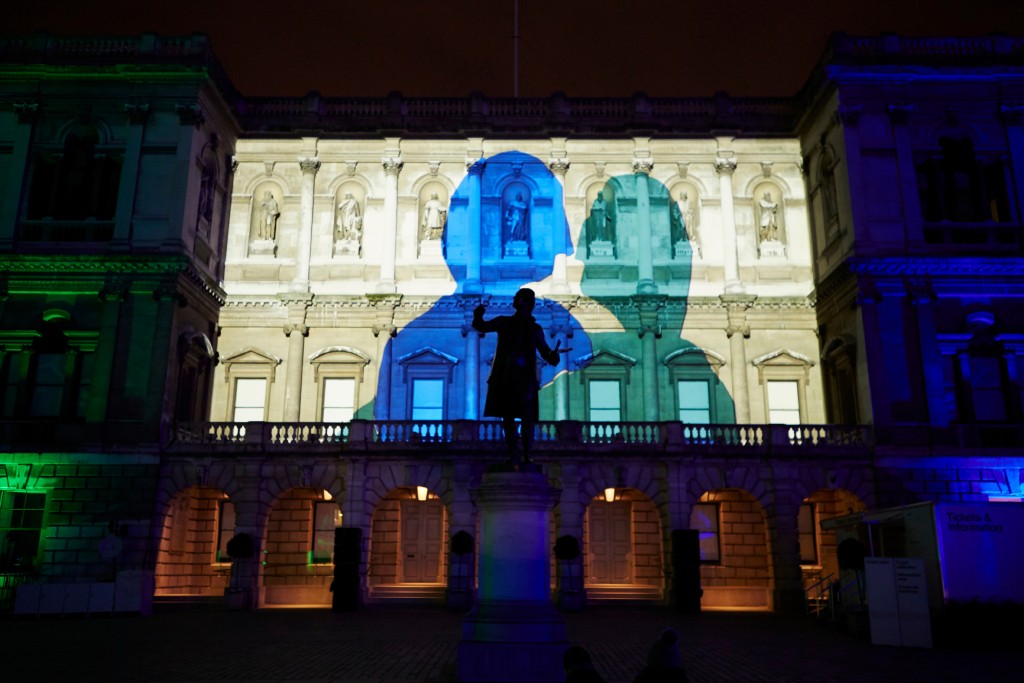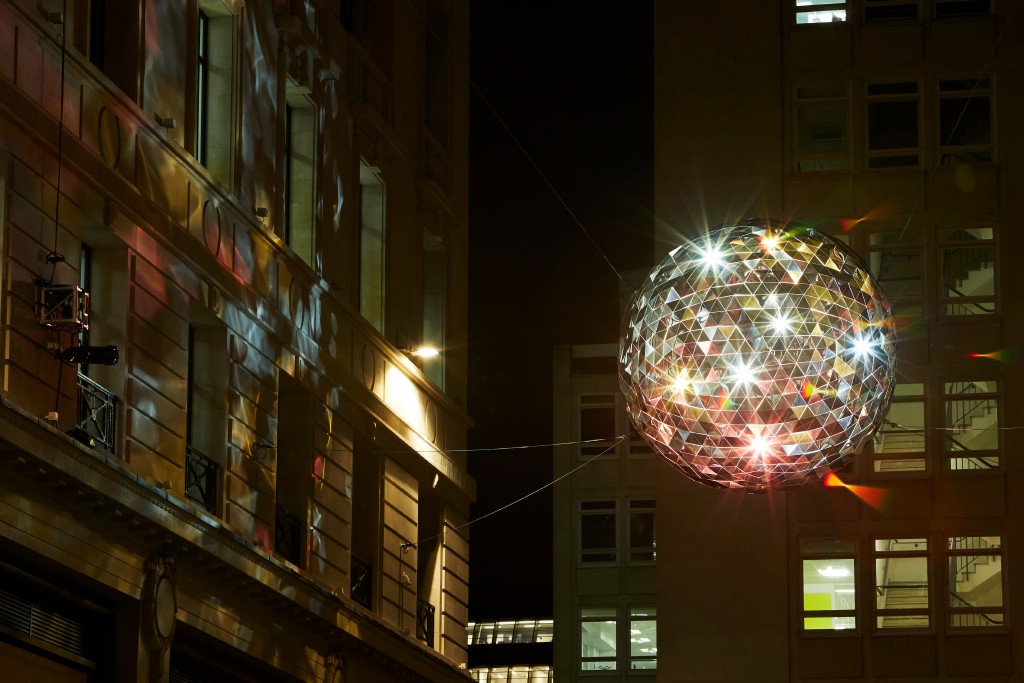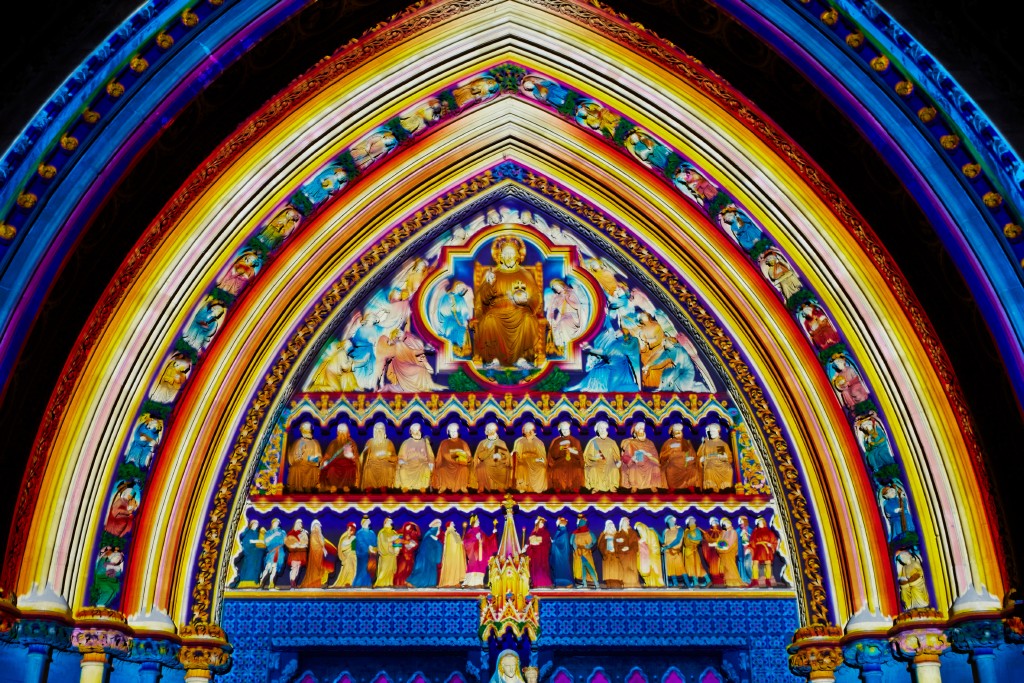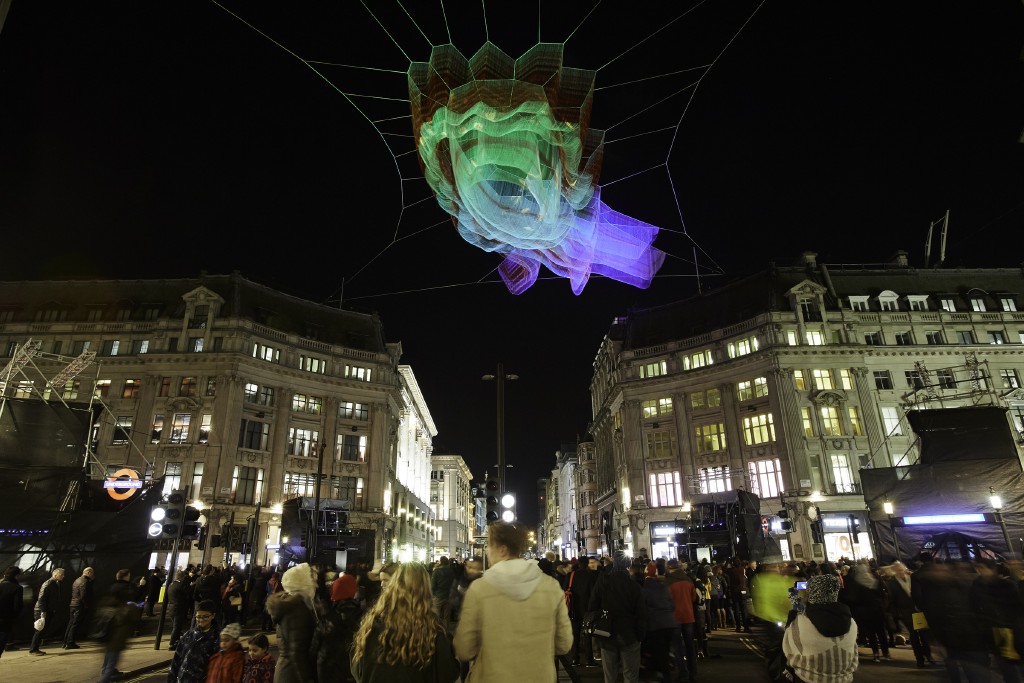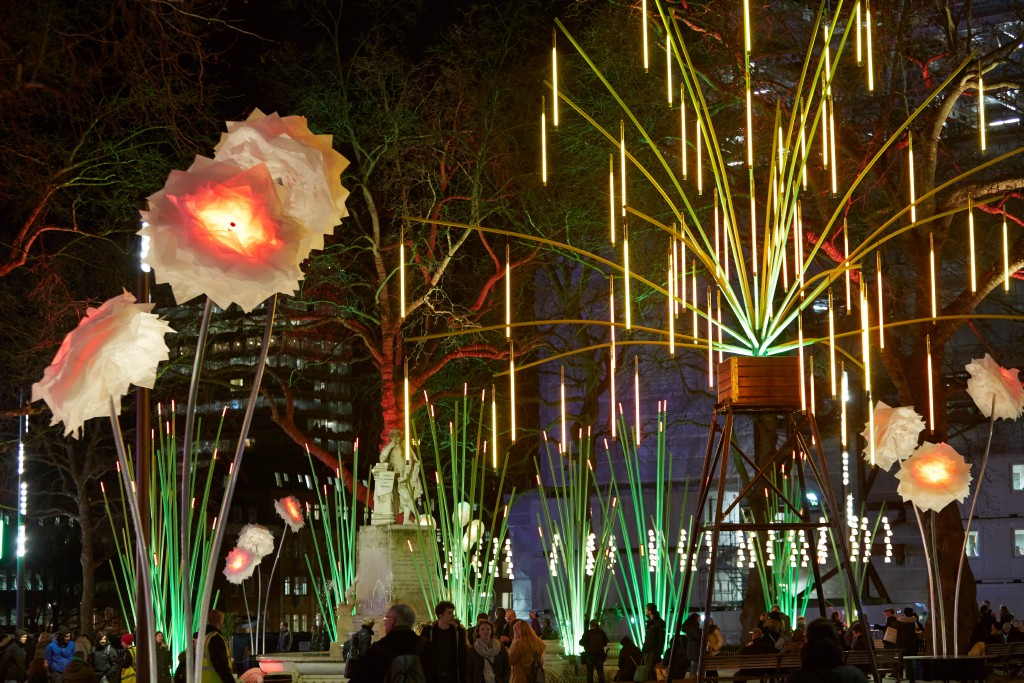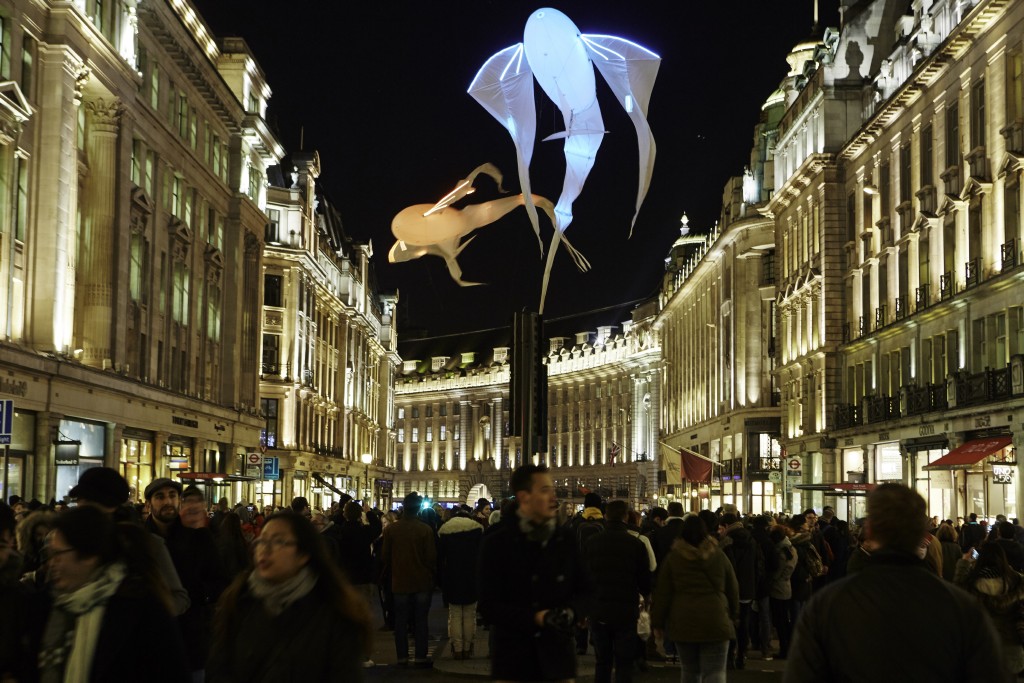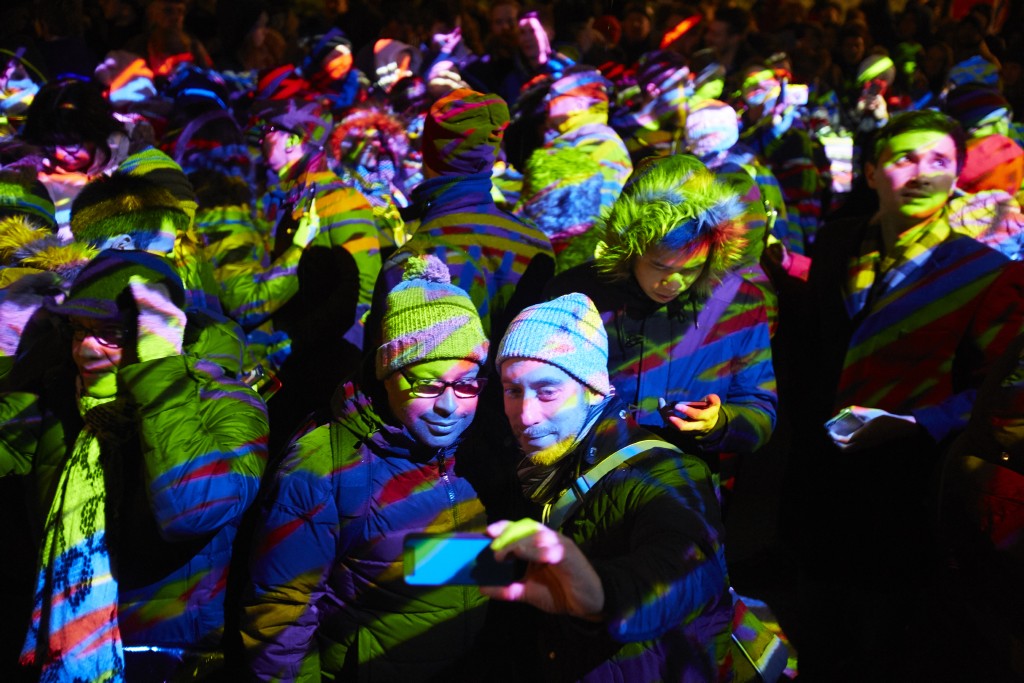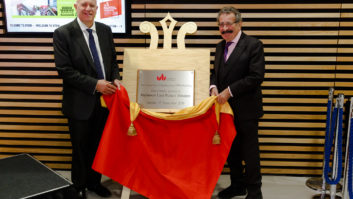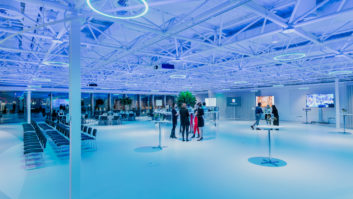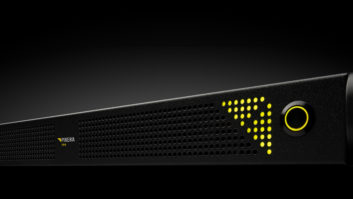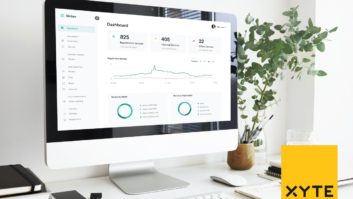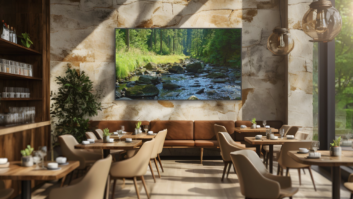The Lumiere London light festival helped breath new life into some of London’s most iconic streets and buildings by using innovative lighting and projection techniques. We spoke to some of the 90 technicians that made it happen.
If you had been walking around central London between January 18-21, things will have looked more than a little different.
For four days, the grey streets of London were awash with colour and animation, bringing new (albeit temporary) life to some of the most populated areas of the capital – all in the name of art.
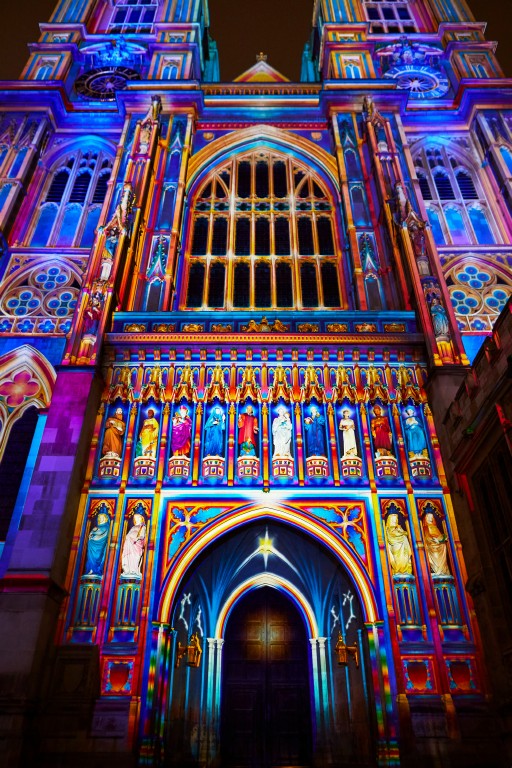
The occasion, now in its second year, was the Lumiere London light festival – a London Mayor backed, free event, which showcased more than 50 pieces of work from leading UK and international artists, transforming some of the city’s most iconic pieces of architecture and streets. These included those in King’s Cross, Fitzrovia, Mayfair, West End, Trafalgar Square, Westminster, Victoria, South Bank and Waterloo.
Planning for each piece took months, sometimes years to complete, working with hundreds of skilled professionals, including 90 technicians from Technicians Make It Happen, to raise the profile of technicians in the UK and encourage young people to consider it as a career choice.
The event itself was produced by Artichoke www.artichoke.uk.com, the largest producer of art in the public realm, with the clear objective of presenting cities and the urban environment in new ways.
Post event, we spoke to some of the technicians about their experience of working at Lumiere London and the technology used to create the final result.

Name: Harry Ricardo, Senior audio visual technician at QED Productions
Installation and location: Ruby, Santiago & Adam: Grey Matters by Emma Allen (UK). Leake Street
I was involved in the planning and technical specification/set-up for this job. I conducted an on-site projection test in order to understand how the piece was going to work, and how our projectors would be best deployed in the space.
We chose three Panasonic PT-RZ970 laser projectors because of their relatively small form factor, high brightness, ease of rigging and most importantly reliability
Our main concern was making the piece work amongst the graffiti covering the walls of the tunnel. We decided the best way to do this was to project the art onto the walls and then to paint the content areas covered by the projection in grey. This meant the projections seamlessly integrated with the graffiti, and there were no gaps or an obvious rectangular screen area visible when the pieces were running.
We chose three Panasonic PT-RZ970 laser projectors because of their relatively small form factor, high brightness, ease of rigging and most importantly reliability. We used QED’s own custom fibre distribution system in order to supply the projectors with both signal and control. The three content streams were played out synchronously using a d3 media server system.
I thought the final result was fantastic. The piece looked like it belonged in amongst the graffiti and gained a very positive reaction from the crowds.
Installation and location:Voyage by Camille Gross and Leslie Epsztein (France). Hotel Café Royal, Piccadilly
I was mainly involved in the project set-up and installation of this piece. A large amount of planning was required due to the unusual nature of the set-up, with the projectors being positioned on the roof of Lilywhites overlooking one of London’s busiest and most iconic intersections.
The logistics of getting the equipment up onto the roof, and organising our working schedules around the daily store opening hours and the weather conditions, required considerable planning but also a lot of on-site flexibility.
We first did a laser scan of the building and built a 3D model, which I used to produce an accurate template for the artists to create the content. I then bought this model into the d3 media server visualiser, positioning the projectors within virtual space as close as I could to where they would be in real life. Once on site I was able to fine tune these projector positions in order to accurately align the content to the features of the building.
As the projection had to contend with the extremely bright permanent LED screen at Piccadilly Circus we needed to use the very latest and brightest Panasonic PT-RZ31K 30,000 lumen laser projectors. d3 was the media server of choice due to its ability to work with the 3D model and because of its high performance in playing back the 4K high frame rate content supplied by the artists.
Overall I think this piece was a real crowd pleaser. It attracted a large number of people and due to the road closures across Piccadilly Circus they were able to enjoy standing in the middle of one of the country’s most iconic landmarks and lose themselves in the piece.
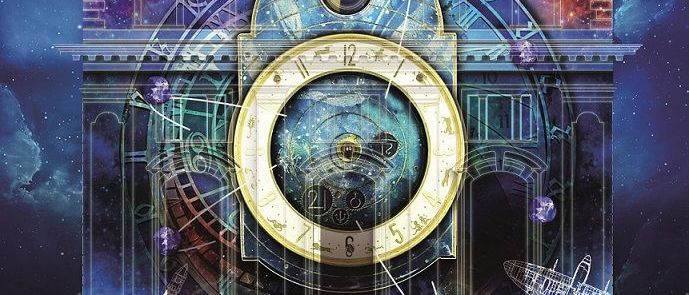
Name: Tony Peaker, freelance production manager, working with Unusual Services, who were brought on by Artichoke to manage the overall production of Lumiere London.
Installation and location: Spectral by Katarzyna Malejka and Joachim Slugocki (Poland). St James Square
My contribution was once the artist was on-site to work out the final details, taking into account the movements of the audience through the park, the access, and being sympathetic to the garden itself and the wishes of the association that look after the garden.
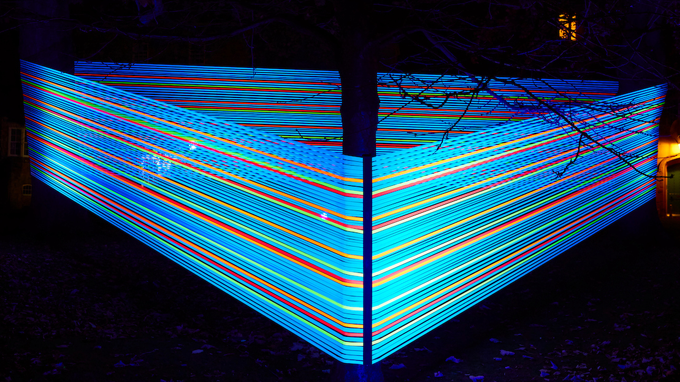
The artist wanted to create a poetic installation where nature and constructed elements combined. When illuminated it created a striking spectacle in this central London square.
Thousands of metres of fluorescent elasticated cord were stretched between the trees, stapled to battens that were attached to the trees with ratchet straps. Care had been taken to prevent damage to the trees. Once the cords were tensioned the finished arrangement was lit with UV LED lights supplied by White Light.
The final result was very effective and the artist was very pleased with how it worked in the space.
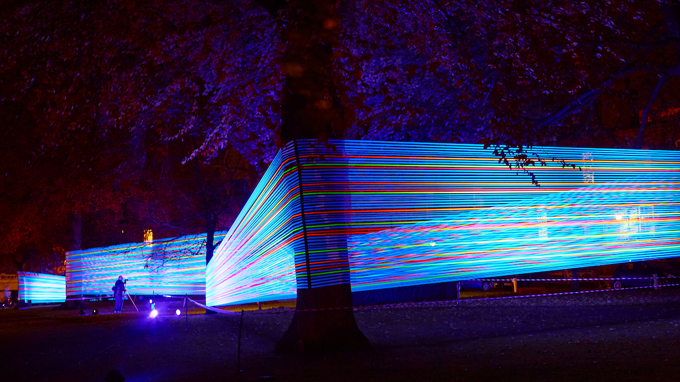
Installation and location: Child Hood, by Collectif Coin (France). Trafalgar Square Co-produced by La Casemate
The pre-planning was done by Jim Dugan and Gary White at Unusual www.unusual.co.uk who were brought on by Artichoke to manage the overall production of Lumiere London. My role was to facilitate the set-up on the day and help prepare the permits for access.
It was a minimal but monumental kinetic artwork made up of luminous inflated spheres that filled Trafalgar Square with light and moved in time to music.

A grid of stage weights was laid out inside a barriered area in Trafalgar Square. Attached to each stage weight was a helium-filled balloon with an LED light inside. The LED lights were cabled as a matrix so each light could be individually controlled. A sequence was programmed to move in time to the accompanying music. The sound system was installed by Delta and designed to give good coverage for the passing audience without causing disruption in the surrounding area.
All lighting technology for the effects were supplied by Collectifa Coin. The audio was L’Accoustic, supplied by Delta www.deltalive.com
This was a very interesting and enjoyable installation to work on. A combination of wind and rain made it a challenging install and we had to replace a few of the inflatable spheres during the show.
Want to see more? Here’s some of our other favourite installations from London Lumiere 2018:
